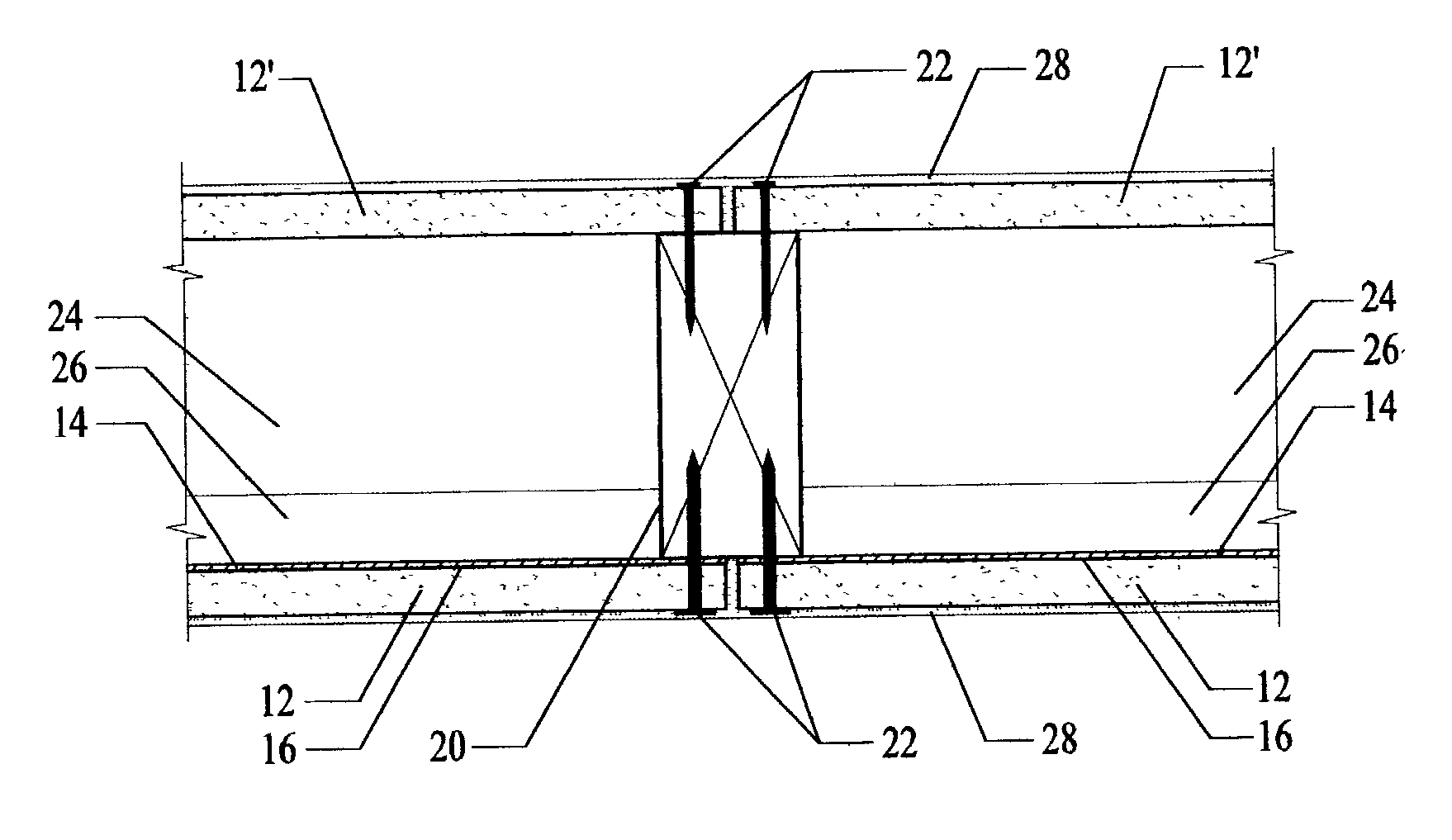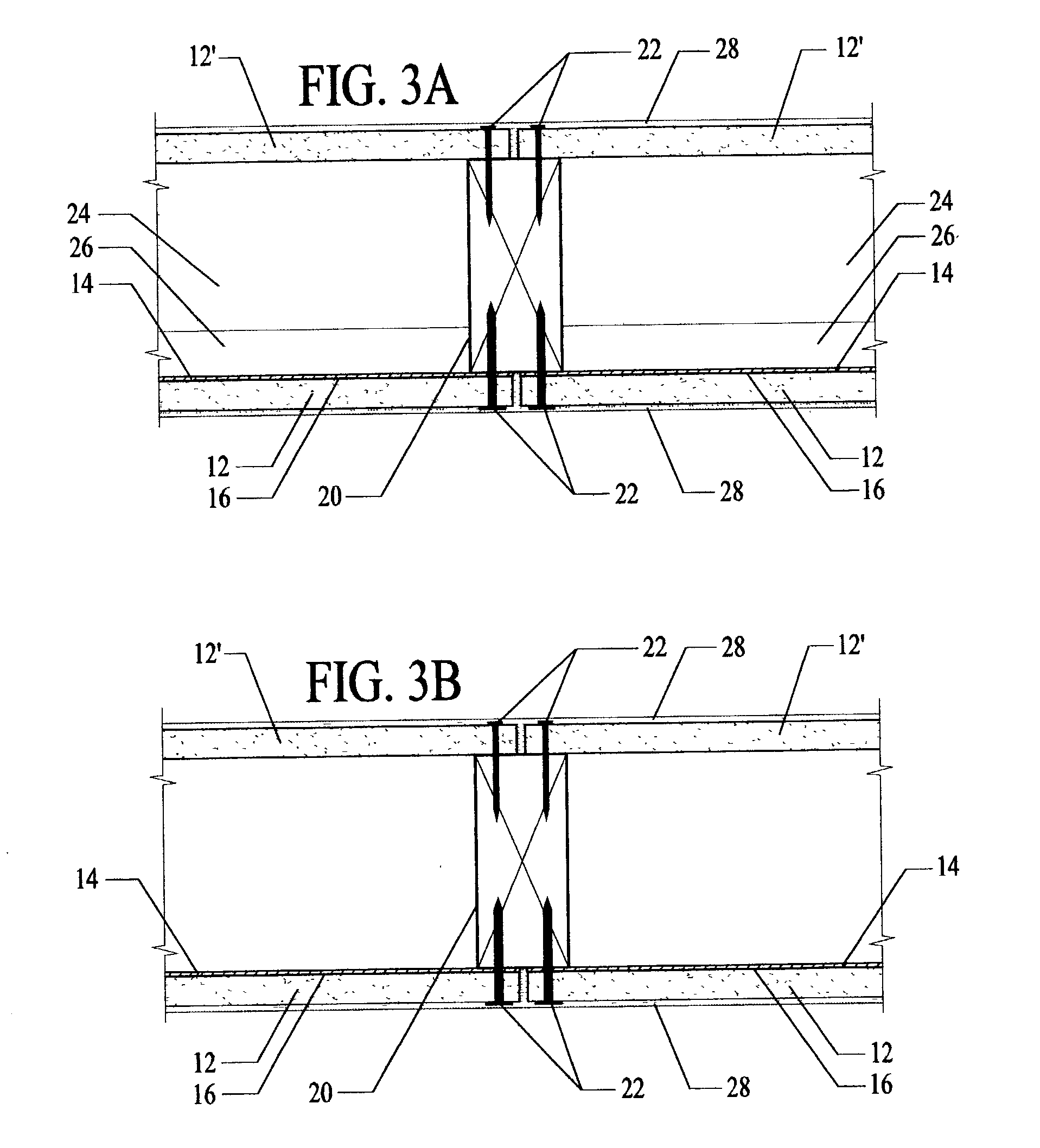Multipurpose composite wallboard panel
a composite wallboard and multi-purpose technology, applied in the field of building materials, can solve the problems of low strength of the panel, lack of in-plane shear strength and ductility, and inability to adequately brace the light frame structure, etc., and achieve the effect of quick attachment and easy handling
- Summary
- Abstract
- Description
- Claims
- Application Information
AI Technical Summary
Benefits of technology
Problems solved by technology
Method used
Image
Examples
Embodiment Construction
[0037] A preferred embodiment of the multipurpose composite wallboard panel of the present invention is illustrated in FIG. 1 (unassembled isometric view) and FIG. 2 (assembled partially broken away cross sectional view) which comprises a wallboard panel 12 and an aluminum sheet 14 bonded together with an adhesive 16 disposed between them. Wallboard panel 12 may be any wallboard product whose center or core material contains gypsum, which may be currently available or developed in the future, and is used to cover wall studs in residential or commercial buildings. Typical wallboard panels may be gypsum wallboard, cement board panels, fiber reinforced panels, or other such wallboard panels used as a substrate for wall finishes (e.g. paint, wallpaper, stucco, etc.). Wallboard panel 12, such as illustrated in FIG. 1, may have paper (usually recycled paper) or fiberglass mesh disposed over the center or core material, which core material has excellent fire resistant properties but is gen...
PUM
 Login to View More
Login to View More Abstract
Description
Claims
Application Information
 Login to View More
Login to View More - R&D
- Intellectual Property
- Life Sciences
- Materials
- Tech Scout
- Unparalleled Data Quality
- Higher Quality Content
- 60% Fewer Hallucinations
Browse by: Latest US Patents, China's latest patents, Technical Efficacy Thesaurus, Application Domain, Technology Topic, Popular Technical Reports.
© 2025 PatSnap. All rights reserved.Legal|Privacy policy|Modern Slavery Act Transparency Statement|Sitemap|About US| Contact US: help@patsnap.com



